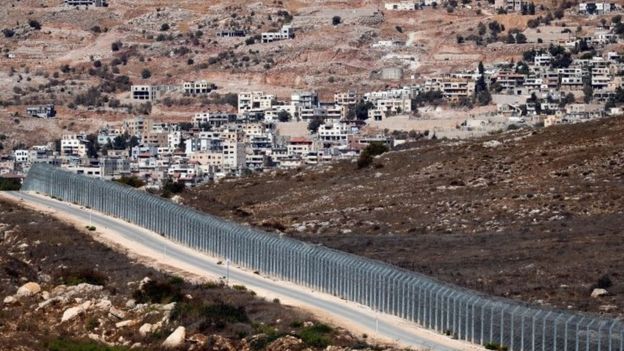More from the BBC:
The region is located about 60km (40 miles) south-west of the Syrian capital, Damascus, and covers about 1,200 sq km (400 sq miles).
Israel seized most of the Golan from Syria in the closing stages of the 1967 Middle East war, and thwarted a Syrian attempt to retake the region during the 1973 war.
The two countries agreed a disengagement plan the following year that involved the creation of a 70km-long (44-mile) demilitarised zone patrolled by a United Nations observer force. But they remained technically in a state of war.
In 1981, Israel's parliament passed legislation applying Israeli "law, jurisdiction, and administration" to the Golan, in effect annexing the territory. But the international community did not recognise the move and maintained that the Golan was occupied Syrian territory.
UN Security Council Resolution 497 declared the Israeli decision "null and void and without international legal effect".
Three years ago, when former President Barack Obama was in office,
the US voted in favour of a Security Council statement expressing deep concern that Mr Netanyahu had declared Israel would never relinquish the Golan.
Syria has always insisted that it will not agree a peace deal with Israel unless it withdraws from the whole of the Golan. The last US-brokered direct peace talks broke down in 2000, while Turkey mediated in indirect talks in 2008.
There are more than 30 Israeli settlements in the Golan, which are home to an estimated 20,000 people. The settlements are considered illegal under international law, although Israel disputes this. The settlers live alongside some 20,000 Syrians, most of them Druze Arabs, who did not flee when the Golan was captured.
Is it just me or does that fence resemble Resident Trump's signature?
8
1
1

